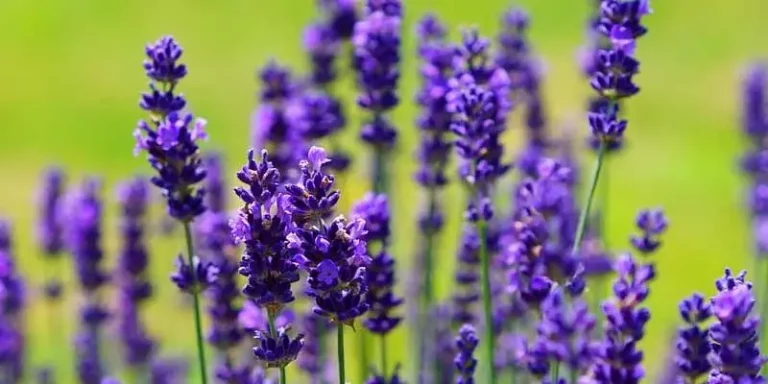Lavender is one of the most popular herbs in culinary applications. There are several reasons for this, including the fact that it’s easy to grow and has a pleasant taste and aroma.
The essential oil from lavender flowers can be used in cooking, as well as in perfumes and other beauty products. It’s also found in soaps, candles, and lotions.
Lavender is often used in baking to add flavor to cakes, cookies, and other sweets. It’s also used to make teas, which are often served chilled or hot with honey or lemon.
You can enjoy lavender flowers fresh from your garden or purchase them at most grocery stores and farmers’ markets during their growing season (June through August). Lavender leaves are edible too if they’re cooked before eating.
Is Lavender Safe To Eat?
Lavender is a perennial herb that has been used as a medicinal plant for thousands of years. It is a member of the mint family, and its flowers are used in cooking, aromatherapy, and herbal medicine.
Lavender is safe to eat in moderation. However, it may cause digestive upset when consumed in large quantities or on an empty stomach. Some people report allergic reactions to the herb when they eat it, so individuals with sensitive skin should avoid lavender altogether.
Lavender’s Safety Profile
Lavender has been widely used in food products for centuries without any reported adverse effects or toxicity, according to the American Cancer Society (ACS). In fact, many studies have shown that lavender oil may have some health benefits including stimulating hair growth and improving sleep quality.
What Do Lavender Taste Like?
The taste of lavender can be described as having a slightly sweet, minty flavor. It’s on the milder side when compared to other herbs like sage or rosemary.
Lavender taste can be enjoyed in a variety of ways including in tea, cocktails, desserts, and more!
How To Prepare Lavender For Eating
Lavender is an herb that’s a member of the mint family. The plant has many culinary uses, but you should know how to prepare lavender before you start cooking with it.
Lavender can be used raw or cooked in savory and sweet dishes. When using lavender as a seasoning, you’ll want to remove the leaves from their stems, which have a woody texture. You can also use flowers, which have a delicate flavor similar to citrus.
To prepare lavender for eating:
1. Remove any wilted or broken leaves from the stems. Rinse off any dirt or debris with cold water and pat dry with paper towels.
2. Chop up the leaves and flowers into small pieces using a chef’s knife or kitchen shears.
3. Add chopped lavender to salads, soups, or stews just before serving so they retain their color and flavor.
If you don’t like the bitterness of lavender, you need to first blanch the flowers and then dry them out. This will remove most of their bitterness and improve their flavor significantly. The next step is to store the dried flowers until you’re ready to use them for cooking or baking.
How To Eat Lavender
Lavender can be prepared in many ways, including:
Dried Lavender Flowers. Dried lavender flowers are used to make teas, tinctures, and infusions. They can also be added to baked goods and other dishes, such as cookies and bread.
Fresh Lavender Flowers. Fresh lavender flowers can be eaten raw or cooked into foods like salads and soups. They’re also often added to drinks like iced tea or lemonade for their flavor and fragrance.
Lavender Oil Extracts. Lavender oil extracts are made from steam distilling dried lavender blossoms into a thick liquid form that can be applied directly to the skin or taken orally (in liquid form).
What Else Can You Do With Lavender Beside Eating Them?
In addition to adding its flavor to foods, lavender has many other uses as well.
Here are some other things you can do with lavender:
Make a homemade perfume – Lavender essential oil is very popular when it comes to making perfumes because of its soothing scent. You can also use it as an ingredient in body lotions or shampoos.
Make a homemade soap – You can make your own lavender soaps by mixing a few drops of lavender essential oil with water and using this mixture as your liquid soap base. If you want something more potent, add some dried lavender buds into your soap mix and let them infuse overnight before pouring them into molds.
Use as an insect repellent – Make a homemade insect repellent by mixing 2 tablespoons of dried lavender flowers with 2 cups of boiling water then let sit overnight before straining out the buds and storing in an airtight container until needed (you may need up to 6 days for the full effects).
Related Questions
Can you eat lavender leaves?
Lavender leaves can be used fresh or dried in cooking. The dried leaves have a stronger aroma than fresh ones, but they have the same flavor when cooked. To use fresh lavender leaves in cooking:
Pick fresh lavender leaves before the plant flowers. The flowers have a stronger aroma than the leaves and are not edible. They are also not as tender as the leaves.
Wash the leaves before using them in recipes or salads so they don’t soil other foods with their dust or pollen.
Use only as much lavender leaf as needed for each recipe because it loses its flavor quickly after being harvested from the plant or dried out by heat from cooking processes like boiling water.

